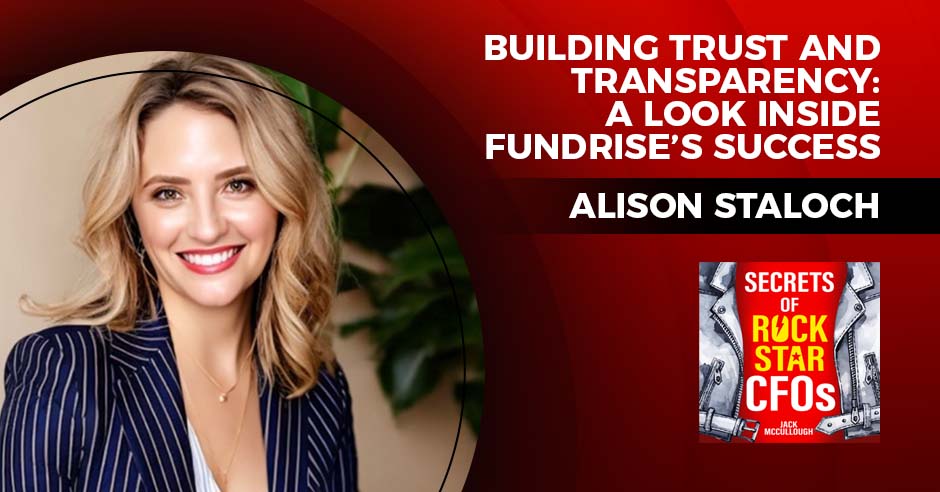In many ways, Announcement Day creates the atmosphere of the deal: It’s when you go public and address shareholders’ questions, both the ones they ask and the ones they’re only thinking about. Their questions are related to the ones the board asks, but investors are most especially interested in the deal logic and synergy targets, the plan to achieve them, and the premium paid. Employees and customers will have questions too. If you don’t, or can’t, address those fundamentals, you’re in trouble. And the trouble will only compound.
Three questions take paramount importance when you’re explaining a deal to investors and other stakeholders:
1. Is there a credible case with defendable and trackable synergy targets that can be accomplished by the acquirer, and monitored over time by investors?
2. Does the story help reduce uncertainty and give direction to the organization so employees can effectively deliver?
3. Does the presentation convincingly link PMI plans to the economics of the transaction?
Remember, if you don’t answer them, investors will assume you can’t answer them and that you don’t have a plan—and they’ll penalize you for it. At their heart, the three questions address one paramount issue that senior management and the board must be able to address: How will this deal affect our stock price and why?
Announcement Day is your first and best chance to get everyone on board—to explain the logic of the deal and how it benefits all parties—and signal that you have a plan. Investor relations in M&A must contend with and help solve a classic asymmetric information problem: Management knows more about the transaction than investors, so investors can only go by what management tells them. Put another way, you know the deal thesis, you have evaluated the landscape, you have been through the logic of this deal repeatedly, you have written a board presentation, had seemingly endless discussions, done the math, prepared the premium—but no one on the receiving end of the investor presentation has.
All that means significant tactical preparation, including documenting the deal thesis and defining stakeholders to selecting communications channels and establishing the timing and presence of your leaders. Get started early and anticipate the critics.
All stakeholders will be paying attention—this is the zenith of attention the deal will get. Don’t waste this pivotal moment. Use the attention carefully.
Pre-close planning
Announcement Day is not the finish line. It’s the starting blocks. If you do garner an initial positive reaction—congratulations! Now the intense work begins: Pre-close planning and post-close execution are how you achieve and sustain value creation over the longer term.
Pre-close planning is rooted in the same story that started with the deal thesis and that flows into the board presentation and into Announcement Day. The topics involved in pre-close planning are themselves necessary to consider before going public with the deal. Knowing where synergies will come from and how, practically, they can be achieved should be central to the approval process for the deal, as is the new operating model—how the combined organization will run its businesses differently, and how it will generate value differently than either organization did before the merger. But the planning goes a huge step further toward the practical realization of all the things that will be necessary to integrate the workings of both companies to create the new organization—taking it from the theoretical to the practical.
Because by its nature an acquisition is creating something new, few of the pre-close planning decisions are routine. From unveiling the details of a new operating model to determining how the go-forward leadership structure and roles should be created to meet deal objectives to planning for Day 1, acquirers will confront a range of issues from the large and operational, like implementing new enterprise management systems, to seemingly minor ones, like what happens to summer Friday schedules and the quality of the coffee.
Many of those non-routine decisions won’t break the deal, but they all add up. Along with the big decisions, they’ll need to be managed and tracked: Enter the Integration Management Office (IMO). The IMO requires influential leaders who understand the businesses. It drives the planning for the future-state operating model, prioritizes decisions, minimizes disruptions, and preserves momentum. It sets the meeting cadence for the entire process. The IMO follows up on the plans made before the deal was announced (that were developed during and after due diligence), and produces a finer-grained roadmap for success across the new organization for Day 1 and the end-state vision. It oversees the workstreams—where the real work gets done—and establishes the synergy targets for each, identifies critical interdependencies, and interfaces with the executive SteerCo on larger, more consequential decisions and approvals.
Under the IMO structure will be individual workstreams such as finance, IT, real estate, and marketing, each of which have their own leadership and charters of what they must accomplish as they build blueprints for their new functional organizations, or businesses, and how they will deliver or exceed their assigned synergy targets.
Organization design works with the new enterprise operating model, the new L1 leadership, synergy targets, and the functional and business operating model choices as they design the structure and roles. Organization design will choose between two process options: 1) design roles and pick the people layer by layer; or 2) design the organization structure and roles all the way down to the ground and then pick the people.
Synergy planning—the heart of the economics of the deal logic—begins with the handoff from the deal team that did the commercial and operational due diligence and built the valuation model. Those projected synergies will be converted into actual bottom-up workplans for each workstream that has synergy targets. The synergy team works with FP&A from both companies to develop a combined functional or business baseline budget; the synergy plan is built on top of that baseline. Synergy plans evolve from initial ideas into prioritized initiatives and detailed project plans aiming to confront the dreaded leakage that can derail synergy programs.
Communication and employee experience works under the presumption that you have borrowed trust you haven’t yet earned. The communications team will develop plans for all relevant stakeholders—employees, customers, vendors, unions, retirees and, of course, investors. Employee experience planning recognizes that you are not onboarding employees; they are not new recruits. The team aims to build employee confidence, establish early trust in leadership, reduce anxiety through targeted communications, and allow a mechanism for feedback so employees feel heard throughout their journey and ready for the forthcoming changes.
All of this leads to Day 1 readiness. Day 1 may seem like a daunting milestone and a never-ending list of decisions and activities. And while it is, it should be, operationally speaking, a quiet one. It is a laser-focused exercise separating absolute must-haves from nice-to-haves. Day 1 is a prioritization exercise and should be flawless because any major hiccups can spell serious consequences for morale and in kicking off the work of post-close execution.
Post-close execution
All of that pre-close planning pays off. It forms the foundation for a series of post-close transitions, when plans are put into effect.
Post-close, the IMO structure shrinks over time as workstreams graduate and the combined organization transitions to business as usual. Graduation signifies that workstreams no longer require active coordination by the IMO—and workstream leads don’t have to go to any more IMO meetings. Workstreams must complete all their integration objectives and achieve their synergy targets, and interdependencies with others should be concluded such that nothing else relies on them.
The organization design team, which has been considering and planning how to combine the two workforces, moves to the talent selection and workforce transition phase. Once L2 or L3 leadership has been announced, talent selection will be based on applying agreed criteria for the new roles consistent with the chosen design option and not at odds with legal guidelines. The process must avoid “death by a thousand cuts.” The team also develops leadership and employee transition plans that facilitate the knowledge transfer that must happen for the smooth operation of businesses as employees move into their new roles.
Synergy planning moves to synergy tracking and reporting. Synergy plans and results that are not managed and tracked aggressively will likely go off plan. The synergy team installs three major mechanisms: financial reporting that tracks benefits realized and their associated costs, milestone tracking for each initiative, and leading indicators that serve as a forward-looking health check that major initiatives are on track. The IMO and synergy team push an aggressive cadence for reporting results, and significant financial bonuses for achieving synergies can be a very valuable incentive.
The growth team(s) will focus on growth opportunities and designing the customer experience—achieving results that neither company could have achieved on its own. Revenue synergies present a special case of go-to-market strategy challenges and M&A can offer myriad opportunities for approaching customers and realizing new growth from cross-selling existing products, new valuable bundled offers, and new innovative products that will delight customers.
Finally, the employee experience team moves on to managing change and creating a new culture to guide all other activities. Executive teams are expected to quickly create inspiring points of view about the possibilities for the future that investors and customers find believable and demonstrate progress. They must simultaneously calm the workforce’s anxieties and inspire employees as they move up their hierarchy of needs and see themselves and their futures with the new organization. These two goals require two carefully crafted—but different—messages. We said that “culture begins at announcement.” Acquirers have to be careful because they, whether they realize it or not, send signals about the new culture—how work gets done around here—with their actions.
Post-close execution moves from the theoretical to empirical, from planning to doing. The merger is all about managing myriad decisions guided by all of the work that came before to fulfill the promise of the deal.
The promise fulfilled
In M&A, you are buying the future—recurring revenues, margins, and growth. It can be a monumental amount of work to do this right, but it’s worth it. Acquisitions can create tremendous value, and value that persists.
There’s something that we’ve heard too often when we’re brought in to help with PMI or to analyze a deal gone wrong: “I raised this before we did the deal.” That phrase represents the recrimination that comes from not having an effective process, or not listening to your executive team that is being signed up to lead and execute your vision.
With The Synergy Solution you’ll have that process, which will raise and address issues, help you do the right deals, and bring your vision to reality. By working through the book, and taking the cascade seriously, you will be both informed and prepared— and able to fulfill the promise of M&A.
But getting M&A right is not just a project. It’s a state change, a transformation that will affect how you approach acquisitions going forward, improving your chances of getting them right. M&A can and should produce enduring value—for the acquirer and its stakeholders, and also for the economy as a whole.
Excerpted with permission from The Synergy Solution: How Companies Win the Mergers & Acquisitions Game (Harvard Business Review Press, March 2022) by Mark Sirower & Jeff Weirens.







